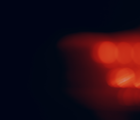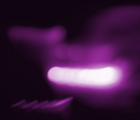Event Info
Èt-shình (Medicine): Teresa Vander Meer-Chassé
** This event has been moved online. Keep an eye out for our online gallery in t...
 Online event
Online event
 Free
Free
Artists
Teresa Vander Meer-Chassé
Event Description
** This event has been moved online. Keep an eye out for our online gallery in the near future and join us on Instagram live for the opening on Thursday, April 23rd at 4:30PM. Additionally, Teresa will be taking over the fifty fifty Instagram from April 23rd until April 30th!***
Teresa Vander Meer-Chassé (b. 1992) is a proud member of the White River First Nation of Beaver Creek, Yukon, Canada and Alaska. She holds a Bachelor’s Degree in Cultural Anthropology and a Minor in Indigenous Studies. Teresa is a full-time Upper Tanana visual artist and independent curator since 2018. Teresa is a member of the Yukon Arts Society and sits on the Board of the Friends of the Yukon Permanent Art Collection as well as the Aboriginal Curatorial Collective.
Her work has been shown across Canada and the United States as well as Iceland. Her beadwork is inspired by the strong women in her life, her mother, aunts, and grandmothers and the support of the caring men in her life, her partner, father, uncles, cousins, and grandfathers. Teresa is mostly a self-taught artist however her Grandma Marilyn, an Upper Tanana Elder and residential school Survivor, encouraged her to start by providing her with supplies, examples, and templates. Knowing the importance of cultural revitalization Teresa’s Grandmother encouraged her to bead and sew.
She primarily works with found objects, beads, hides, bones, quills, and antlers. Teresa incorporates her Upper Tanana culture in all the work she creates. In 2016, Teresa received a prestigious YVR Youth Scholarship award. The artwork created with the scholarship was accepted into the Yukon Permanent Art Collection in 2018. Teresa received another YVR Youth Scholarship and the artwork will be complete in May 2020. Throughout 2018, Teresa collaborated with artist Nicole Bauberger in creating Raven-inspired sculptural works from tire remnants found on the side of the Alaska Highway. The two received a Canada Council for the Arts Creating, Knowing, and Sharing grant. Today, Teresa has received funding from her First Nation to work on a comprehensive language project that will document the traditional ways of harvesting large game, hide tanning techniques, and traditional teachings of creating clothing. She is also preparing for several group and solo exhibitions throughout 2020 as well as significant curatorial achievements.
Èt-shình (Medicine) is about resilience, health, and power. As an Indigenous woman; racism, prejudice, lateral violence, and sexism are daily experiences. The effects colonialism has and the forced removal of the matriarchy have significantly impacted our communities for the worse.
Èt-shình (Medicine) is a body of work that relates to my experiences with colonial patriarchy. Each garment is representative of unique experiences I’ve had over the last several years. Each piece is meant to make the wearer feel powerful and protected. This exhibition marks the beginning of my exploration into the world of upcycled fashion. I’ve enjoyed making the garments throughout my residency at the Bonnie McComb-Kreye Artist in Residence here in Victoria, British Columbia.
Èt-shình (Medicine) also includes three graduation caps that I discovered in a trash can at the University of Victoria while in residence in the Department of Art Education. Although I hold a post-secondary degree, I do not have any formal training in art. I was taught by my Grandma and I felt it was important to keep the natural flow of my learning to community-based. I believe you don’t need a degree to be successful in life. My family is full of self-made, self-taught, entrepreneurs that are successful without obtaining a post-secondary degree. I wanted to pair the garments with the graduation caps because both speak towards the feeling of independence and power.
And finally, Èt-shình (Medicine) explores what it means to be a light-skinned Indigenous person. I’ve created a series of beaded patches with the letters W.I.G. on them. W.I.G. stands for “White Indian Girl,” a comment made within a threat that sparked the need for this exhibition. W.I.G. is a reclamation of my visible and invisible self.
Èt-shình is my medicine.
Venue
2516 Douglas Street
since 2003

